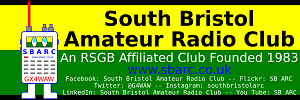GB2BLE Lundy Island DXpedition 2011
Location
This years operation was based at Government House on Lundy Island. The following information will be of interest to Radio Hams:
- Lat/Long: 51.165213°,-4.664307°
- IARU IO71qd
- IOTA EU-120 (English Coastal Islands)
- WAB (Worked All Britain) SS14 England
- North Light: NATS (Navigational Aid to Shipping)/ALLRN (Admiralty List of Lights Reference Number) A5616
- Old Light: NATS (Navigational Aid to Shipping)/ALLRN (Admiralty List of Lights Reference Number) A5617 (Not Operational)
- South Light: NATS (Navigational Aid to Shipping)/ALLRN (Admiralty List of Lights Reference Number) A5618
- Jetty Head: NATS (Navigational Aid to Shipping)/ALLRN (Admiralty List of Lights Reference Number) A5619
- WWFF (The World Wide Flora and Fauna Programme) GFF-103
The Team
This part of the year comes around so fast. It seems only a few weeks ago that we started planning for this year and yet, as ever, we find ourselves panicking in the last week to get things together.
This years team comprises:
- Peter G0DRX;
- Matt G0ECM;
- Julia SWL;
- Steve G0UQT; and
- Andy G7KNA
We are staying at Government House, which despite appearances is actually one of the most recent properties to be constructed on the island.
There is the usual mix of equipment planned for this year:
Main HF Station (SSB)
- Yaesu FT-950 HF/6m multi-mode transceiver (G0ECM)
- MFJ-949E Versa Tuner II DeLuxe (G0DRX) – this gets used in bypass mode as an SWR Meter
- SGC SG-237 auto ATU (G0DRX)
- Yaesu MD-100 desk mike (G0UQT)
- Watson Power Max 25 NF switch mode power supply (G0UQT)
- Heil Proset HC6 noise cancelling headset with boom mic (G0ECM)
Secondary HF Station (Data – PSK31)
- Yaesu FT-857D HF/6m/2m/70cm multi-mode transceiver (G7KNA)
- LDG Z-11 Pro Mk1 auto ATU (G7KNA)
- Diamond SX-600 SWR/power meter (G7KNA)
- Watson Power Mite 22 NF switch mode power supply (G7KNA)
- Homemade isolating transformer soundcard interface (G7KNA)
- Acer Aspire One netbook computer – Atom CPU, 16GB SSD, 1GB RAM LUbuntu 11.04 (G7KNA)
VHF Station
- Kenwood TR-751E 2m multi-mode transceiver (G0UQT)
- Kenwood MC-60 desk mike (G0UQT)
- Avair AV-600 SWR/power meter (G0UQT) – Diamond SX-600 clone
- Colinear vertical antenna (G0DRX)
Antennas
There was a degree of uncertainty as to what antenna arrangements we could practically erect once on site. Traditionally GB2BLE has used simple end fed long wires, but this has relied on us occupying 2 properties. This year we would only have Government House, and so a different solution would have to implemented. One that did not interfere with the other users of the island or the everyday operations of the island.
We had a few options open to us:
- An 80m half wave dipole fed with 300Ω ladder line (G0ECM)
- A homemade Buddipole clone (G0ECM)
- A Q-Tek Penetrator (G0UQT) – which based on past performance can be likened to a large, expensive dummy load
- A 30m half wave dipole fed with 50Ω coax (G7KNA)
- A half size G5RV fed with 50Ω coax to a balun(G7KNA)
- 3 roach poles 1 no. 10m and 2 no. 7m (G7KNA)
Naturally there was any number of miscellaneous data interfaces, handhelds, laptops and Yaesu FT-817s. In computer terms Windows was once again in the minority with only one laptop running XP. Another netbook ran LUbunbtu 11.04, whilst the remainder were various MacBook derivatives running OSX.
Saturday 3 September 2011
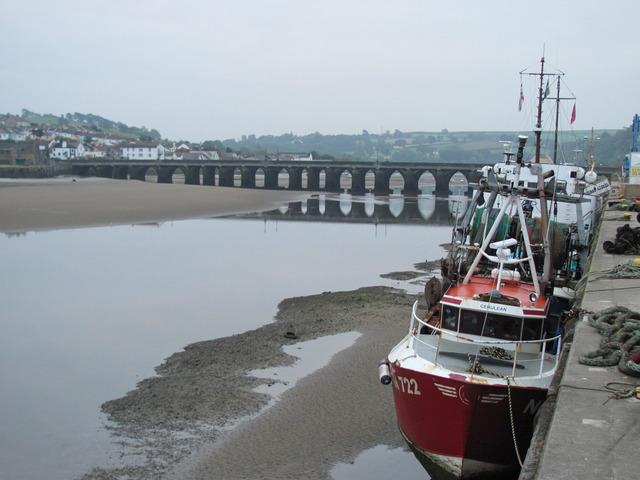

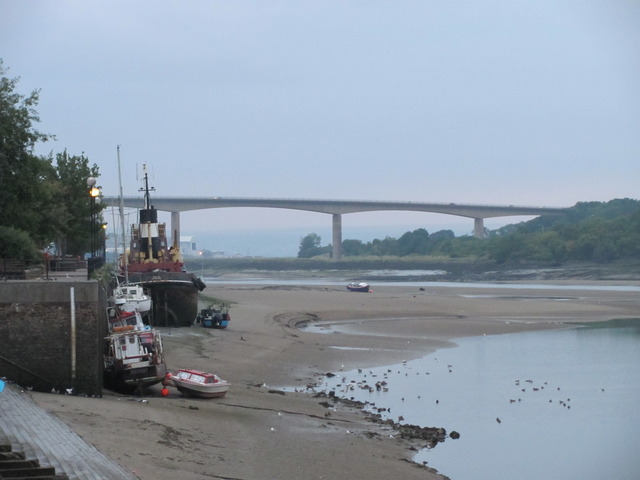

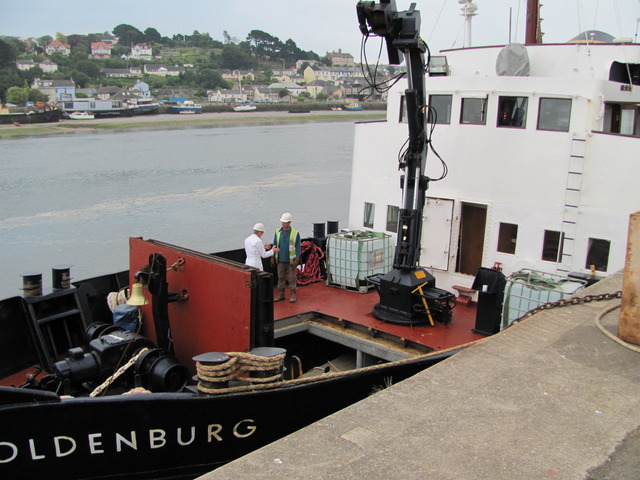
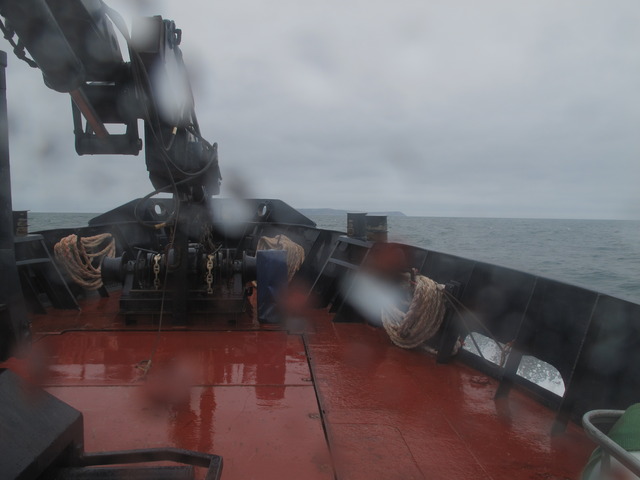

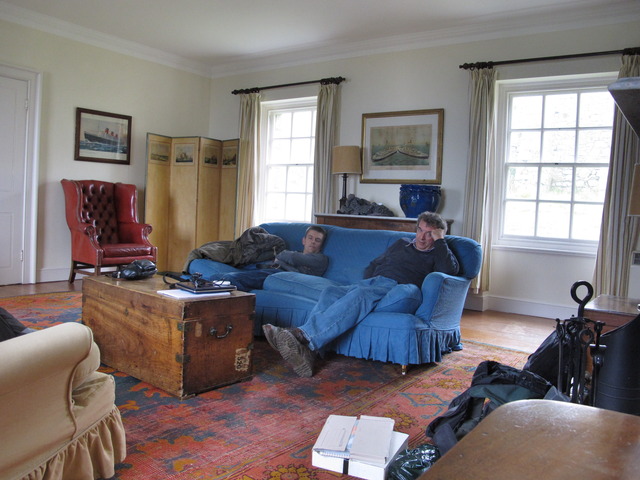

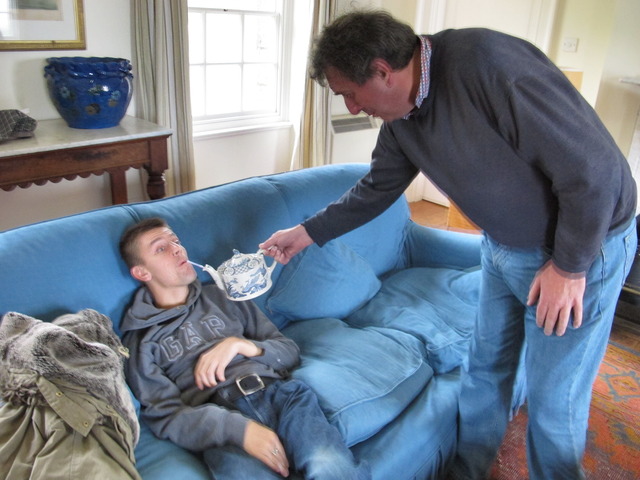
We leave the Bristol area about 04:30. Peter, Matt and Julia meet at Steves QTH and board the hired mini-bus which is once again driven by Steves father. Andy is picked up en-route. Most of us doze on the bus or chat. In some cases as a result of the early start and the last minute panic over faulty construction some of the team didn't sleep on Friday night so this is a chance to catch up.
We arrive at Bideford at 07:30. Surprisingly the tide is well out at this time and the MS Oldenburg, which is the ferry/supply boat for Lundy Island is sat on the sand. We needn't have worried, the tide came in rapidly and the boat was soon floating and loading. We boarded about 08:30 and departed 09:00.
The crossing was lumpy although some of us found it just plain uncomfortable. However, we all survived without mishap and by 11:10 we were at the jetty and disembarking. This is followed by the trek from the jetty to the village and check in. Government House wasn't ready so we sat in the Marisco Tavern and waited until after lunch. Tiredness was obvious in all of us and it was all too easy to doze off sat in the warm surroundings of the Tavern.
We adjourned to Government House after lunch, did a little bit of planning and waited for the luggage (which included the bulk of our equipment) to be brought up from the MS Oldenburg.
Sunday 4 September 2011
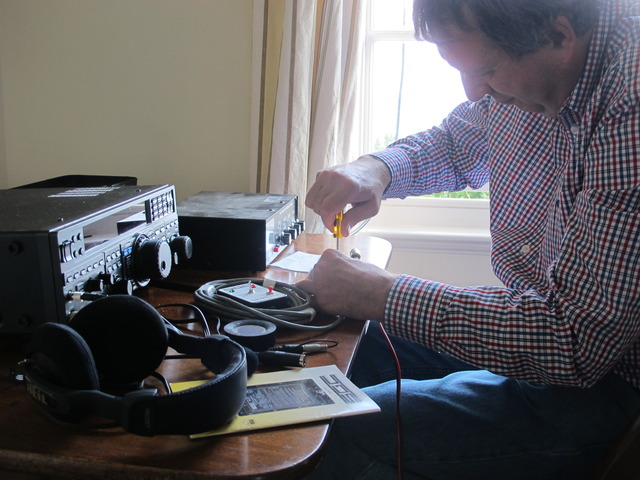

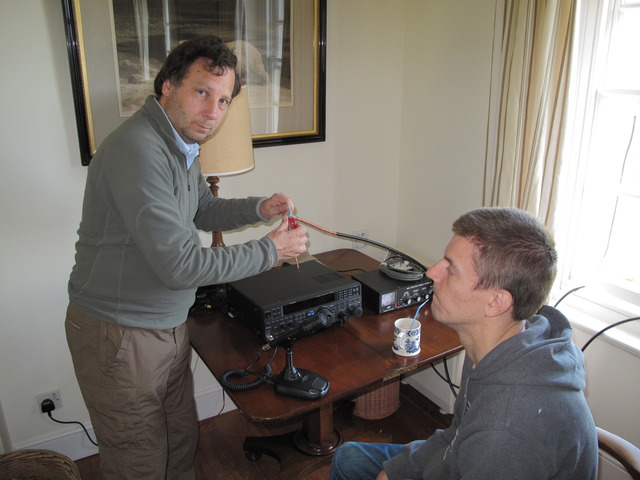

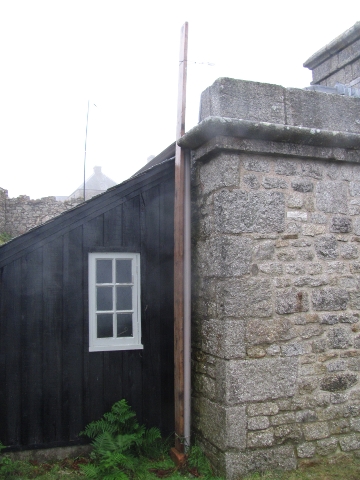
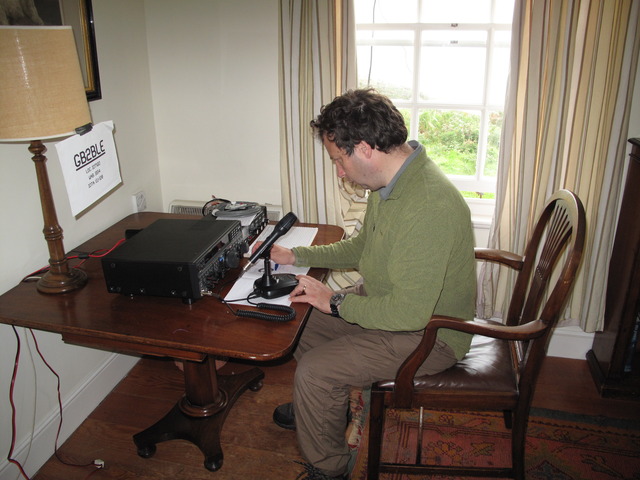

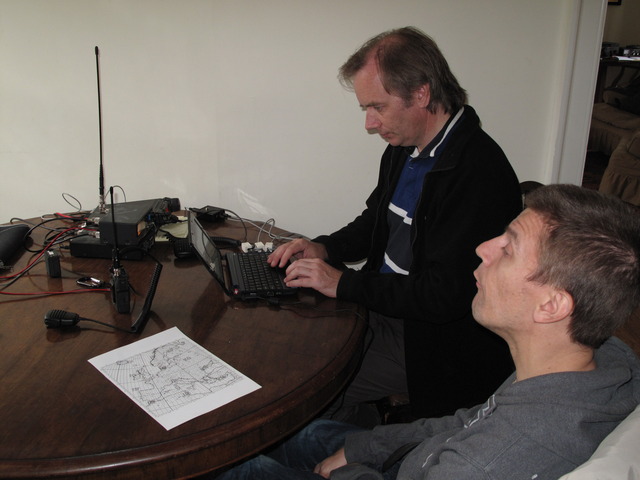

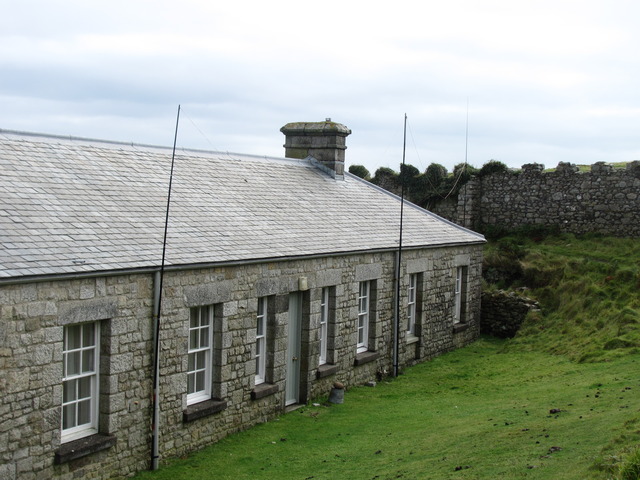
First order of business is to set up the stations and iron out the kinks. Both stations went together reasonably easily inside the building but the antenna construction was a bit more challenging. We elected to go with the 80m dipole for the main station but to treat it as a "tee" antenna by connecting both sides of the ladder line to the "hot" terminal on the SGC auto tuner. The antenna itself was strung between a fence post and a temporary plank tied back to Government House. This ensured that the antenna was high enough in the air to be clear not only of passing people but also those passing people who might be carrying step ladders which is more common than you would expect on Lundy as photographers and bird watchers often desire that little extra elevation!
For the data station we elected to go with the half size G5RV erected using 3 roach poles tied back to the rainwater downpipes. The weather chose the time when the G5RV was being put up to change to squally rain. This didn't stop the antenna from being put up, but Andy G7KNA in particular was totally soaked in the process – kudos for dedication though!
Test time, the main HF station was operating as expected after a bit of additional earthing although we later discovered that the antenna wouldn't load up on either 80m or 160m. The data station was suffering a bit of RFI. Nothing major but the mouse trackpad would lock up periodically. This was more or less dealt with by putting ferrite cores on the USB Cat cable and the Audio In and Audio Out cables. It couldn't be completely avoided but then having two 100W transceivers in close proximity and with antennas also in close proximity some interaction was to be expected.
So time to get on air, the SSB station was suffering from the Asia contest and very little interest in their calls, however on PSK31 things were ticking over quite nicely. Andy was quite pleased that after the addition of the ferrites the homemade isolating transformer interface was working well. Highlight of the evening was working VK2MBK on 20m PSK31. It took a bit of effort to break the pile up and we had to be a bit unkind by running the FT857 at full power with more digi gain than is polite but the QSO was made.
Overnight the wind was very strong, possibly gusting Force 8.
Monday 5 September 2011
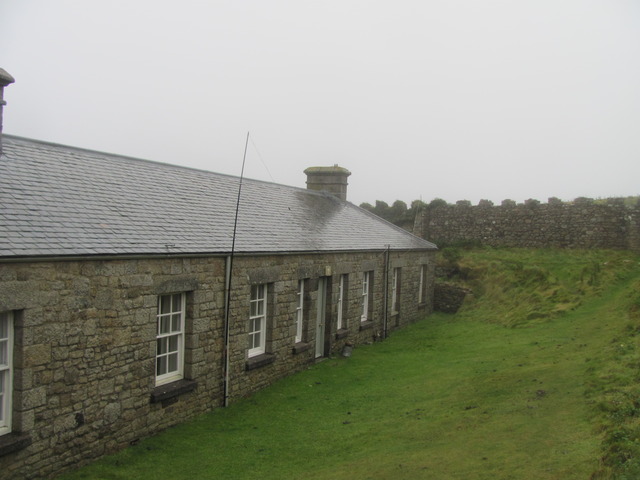

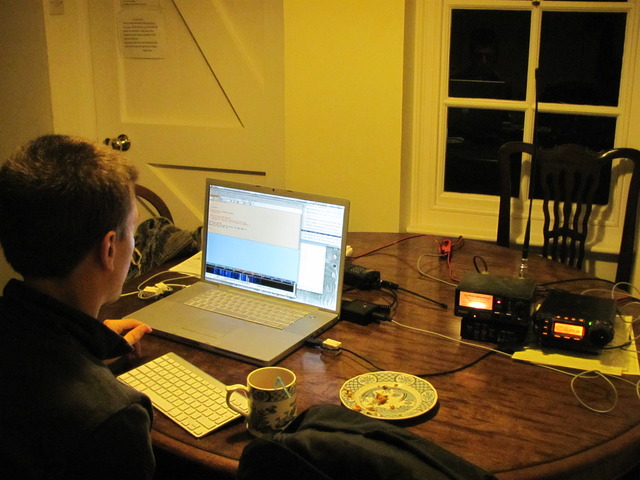

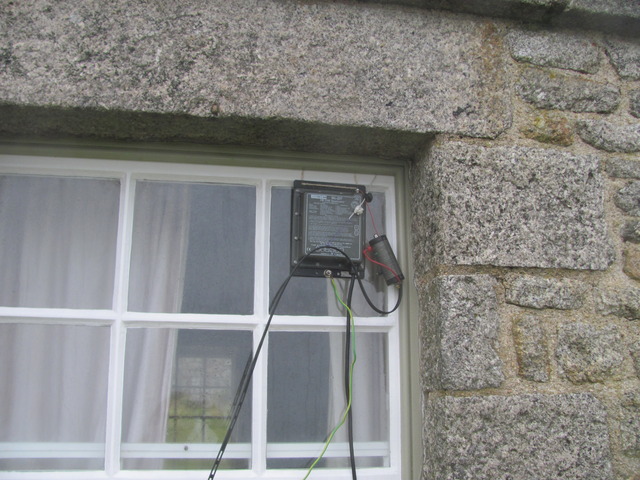
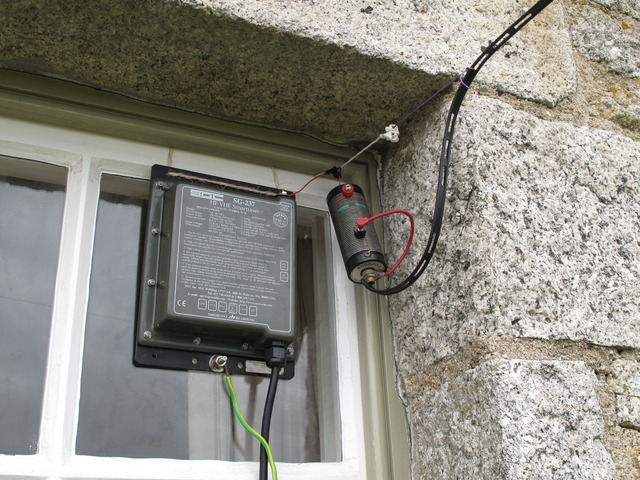

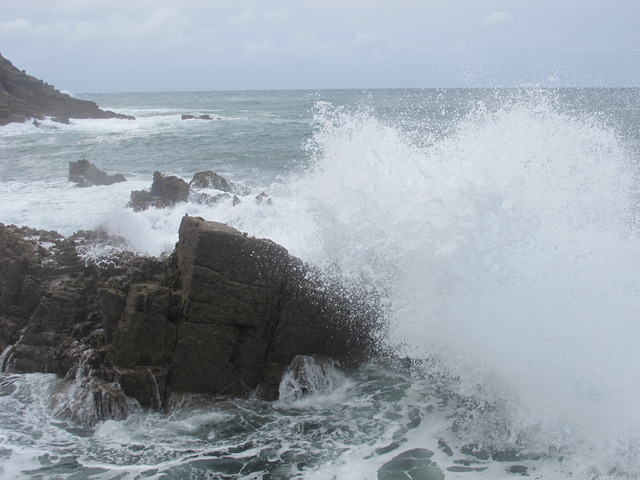

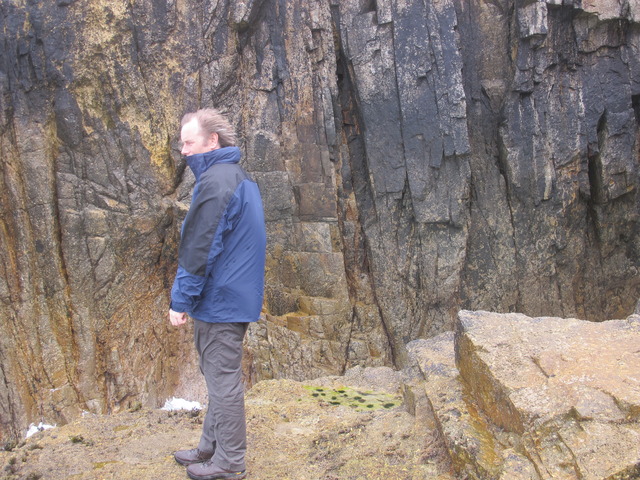
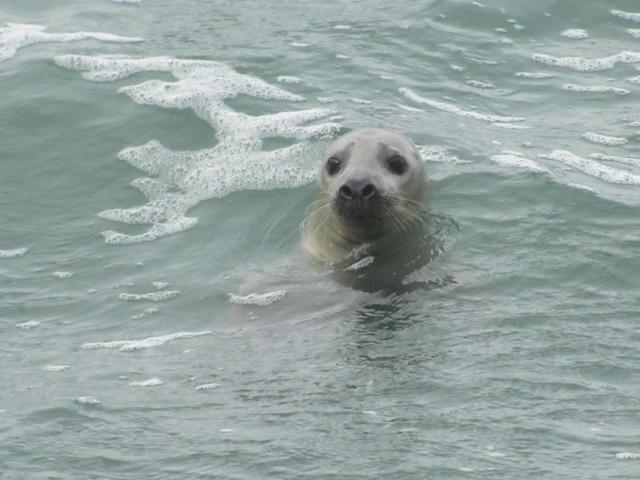

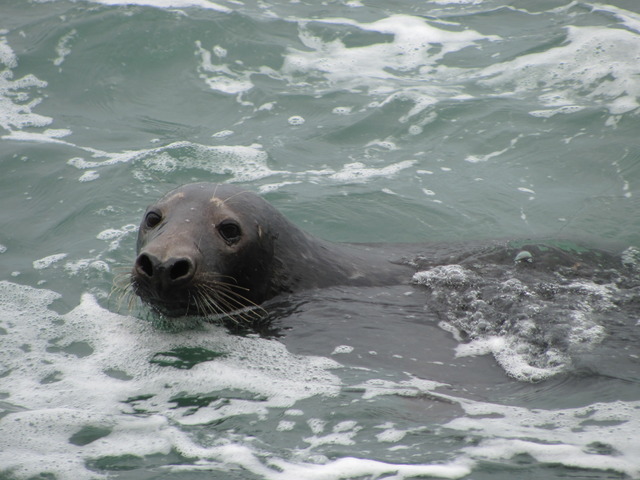

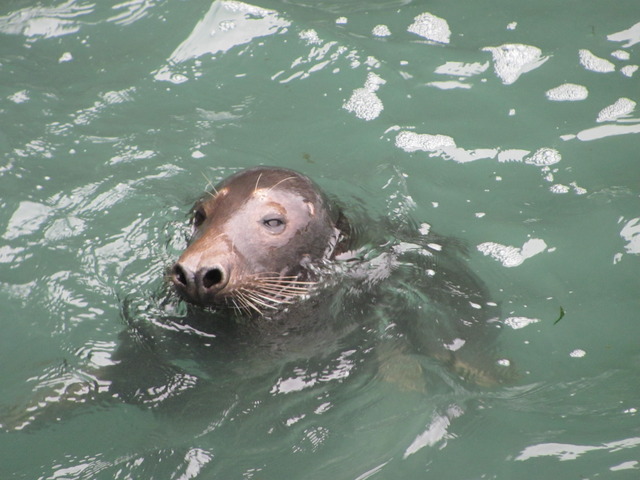
Despite worries the antennas survived the overnight high winds. The 80m dipole, which by now was rapidly becoming an off centre dipole in efforts to get it to tune on 80m, survived intact. The G5RV was also OK although the centre roach pole had loosened and collapsed into itself. This was probably the best thing that could happen as it effectively dropped the wire limbs of the antenna onto the roof of Government House thereby reducing the wind loads on the antenna.
Andy wanted to TWEET about the VK2 contact but mobile web access is proving unreliable. It's probably time to take a trek up to the higher parts of the island for a stronger signal but at the moment the wind is still strong and the rain is coming down. Best to wait until the rain passes.
We had a few problems with the data station. RF is getting back into the Acer, it's not a major problem but it is odd that it didn't happen yesterday. The symptoms manifest themselves as a mouse trackpad lock up. It is still possible to use the keyboard but it is an issue. The problem was tracked down to the antenna. The centre pole had dropped again and the antenna feedpoint was much closer to the equipment than when it is put up properly. Raising the feedpoint seemed to cure the problem.
We decided to switch the PSK31 computer over to Steves MacBook Pro. Not only is this a vastly more powerful machine than the Acer, which is not a particular issue for PSK31, it features a metal case which might make it more resilient to nearby RF. Fortunately as we use FLDigi as our data modes program of choice there is no problem in switching from Linux to OSX or even (perish the thought) Windows since the program is available on all platforms and performs in the same way. We transferred the logbook and the macro definition files from the Acer to the Mac and carried on.
The Macbook seemed to have a more reliable drive volume than the Acer. With the Acer we noticed a gradual increase in power during transmission which did not seem to be occurring with the MacBook. We adjusted both PC volumes and the digital gain to achieve good average power out with no ALC indication and carried on working with the MacBook. We were rewarded with a QSO into India.
Over on the main station the antenna modifications have continued. Yesterdays length additions that had resulted in an off centre dipole have been removed. The dipole legs have been bridged at the feedpoint and a loading coil added into the feeder. Exactly what sort of antenna this has now become is not clear, the twin feeder is effectively a single feed since both legs are connected to the hot side of the ATU and both legs are bridged at the antenna. This now forms effectively a tee but it does now load up on 80m and 160m.
On a non-radio subject Andy and Matt walked to the North Light and went down the steps to the old landing platform. There were 4 seals swimming off the north end and a few good photos emerged.
Tuesday 6 September 2011
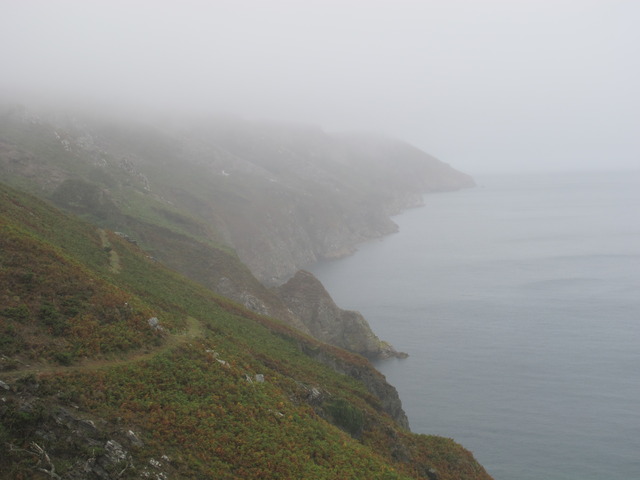

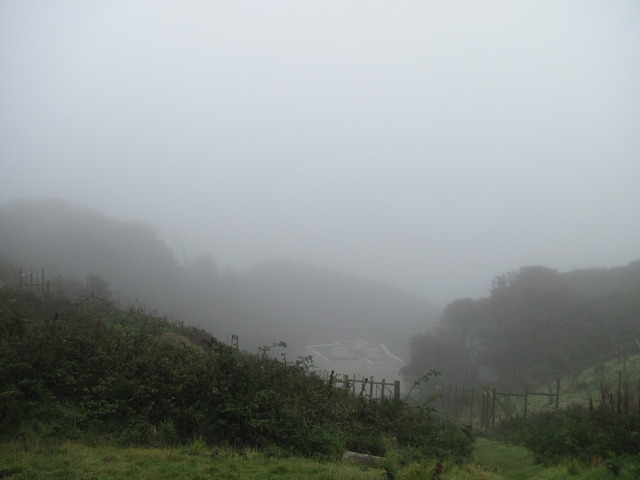

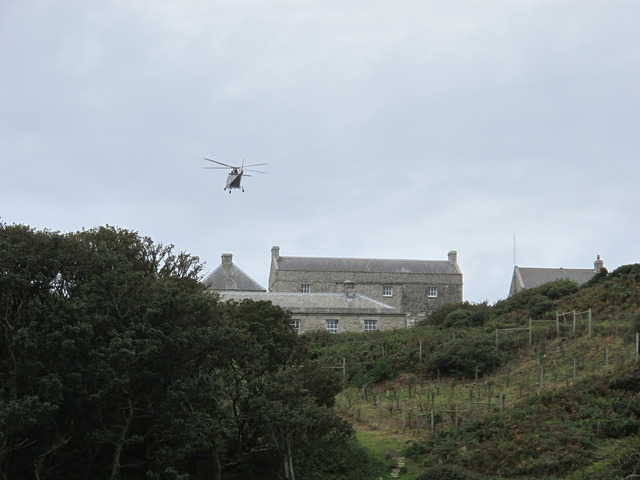
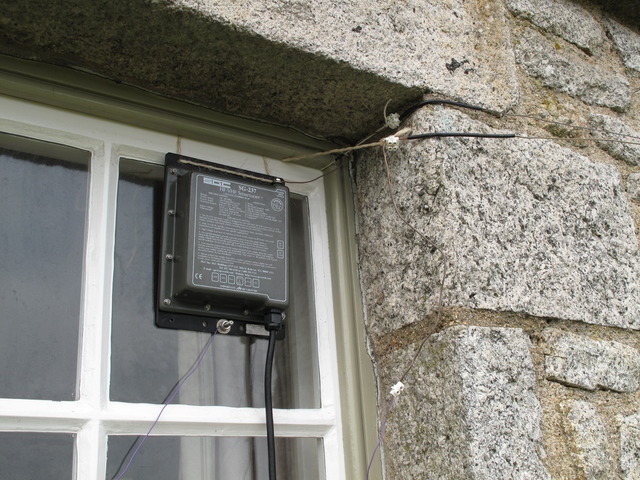

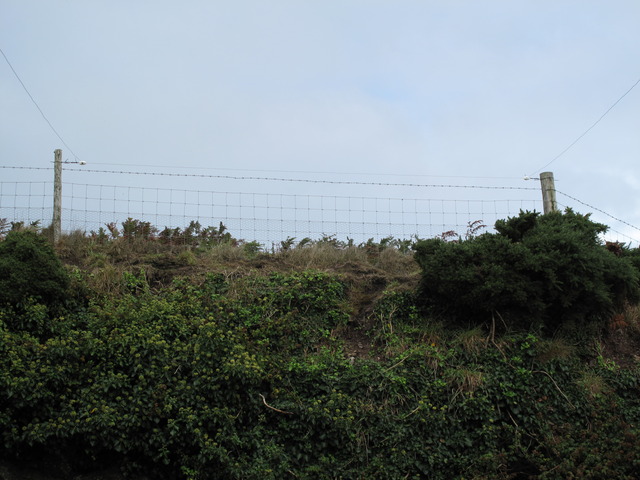

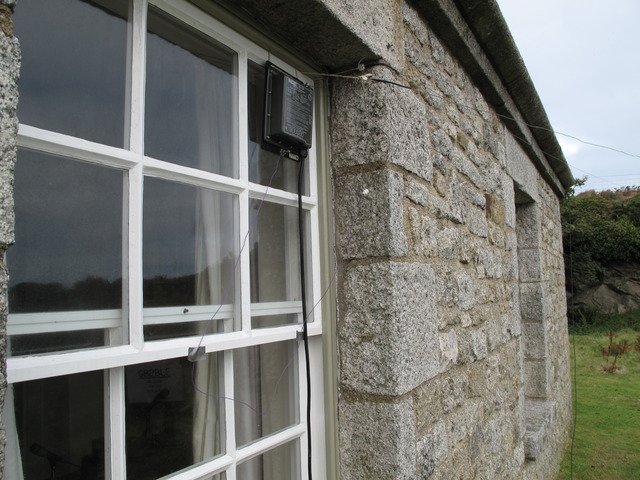
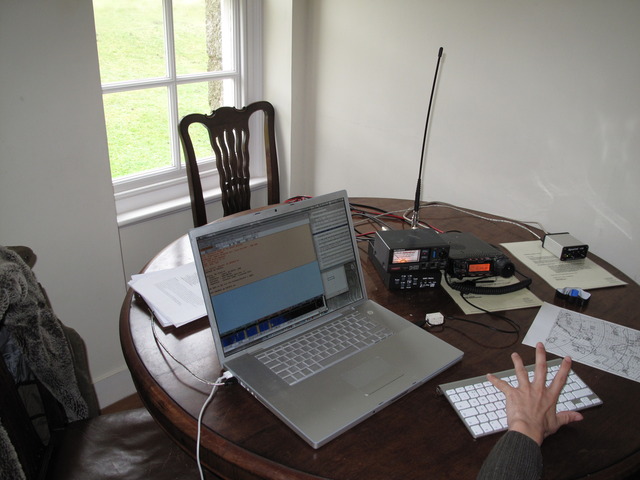

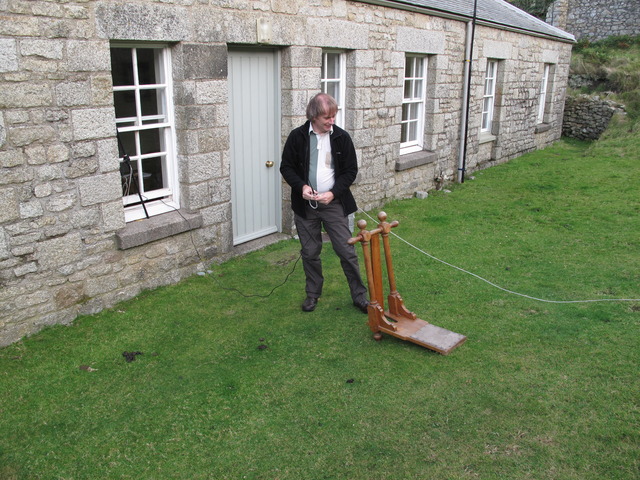

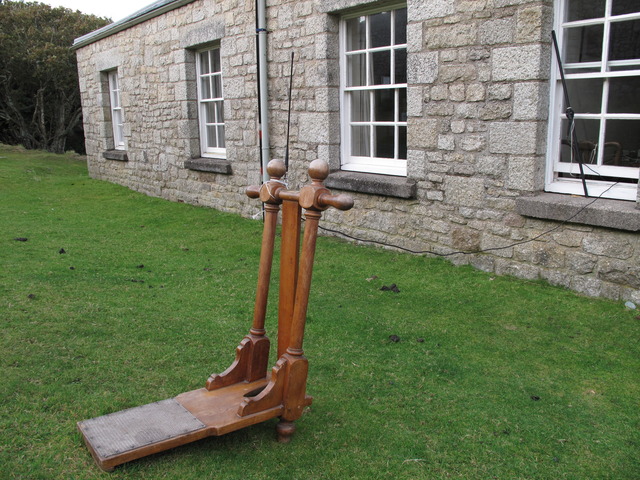
The overnight weather was again squally with rain and gusting winds. It is becoming a routine now where the first person up and dressed inspects the antennas. Overnight the data stations half size G5RV has once again collapsed its centre roach pole support. As before this can easily be rectified before we go on air and the collapse has once again protected the system from further damage. Our main station tee antenna is, however, in a bad way, the feeder has broken off the antenna at the feedpoint. We are going to have to take the antenna down to effect a repair. This will probably have to be the first order of business.
Much discussion ensued about the best arrangement for the antenna. There was some concern that the tee was not effective. After much debate it was decided to dispense with the tee and convert it into a loop. This entailed moving the end of the dipole that was currently anchored to a plank of wood tied to a rainwater downpipe to the hot side of the SGC ATU. From here the wire would be strung around a couple of fence posts using the existing insulators as standoffs. An additional 5m of copper wire was added to the returning end of the loop to complete the circuit back to the earth side of the SGC ATU and provide a 45m loop which was rather low to the ground, perhaps averaging 4m – 5m above ground.
After some minor adjustments to the basic design the antenna was found to be capable of tuning all bands from 160m – 6m via the SGC ATU.
It seems to be a day for minor adjustments or alterations, the data station had been performing quite well except when the feedpoint on the G5RV had dropped to gutter level and RF got into the Acers Mouse trackpad. Todays problem manifested itself as very variable output power despite the operating frequency and the rig settings being unchanged. Whilst some small variations in the ALC levels were to be expected given the temporary antenna and the wind effects, the differences being monitored could not be readily reconciled with simple wind effects.
After a bit of poking and prodding the patch lead from the FT-857 to the SWR meter was swapped out. The lead from the homebrew isolating transformer interface to the FT-857 was also found to have questionable continuity. Given the background to this cable this is not a great surprise. The homebrew interface which had proved itself capable was replaced with a Signalink USB data interface.
More fun and games ensued in the afternoon as we tried to set up the 2m transceiver to complete our band coverage. The 2m colinear displayed a horrible and totally unexpected SWR. Whilst some of this was a result of putting the antenna in a window frame the SWR was still unacceptable. Much consternation ensued as we attempted to find an acceptable alternative, none of which really fitted the bill. The problem was ultimately tracked down to the SO239 connector at the base of the antenna. The centre of this had widened out and resembled an N-Type connector. Using an N type plug had failed to make a centre pin connection with the result that the high SWR came from loading the feeder only. Repairing the connector and using a PL259 solved the SWR problem.
Wednesday 7 September 2011
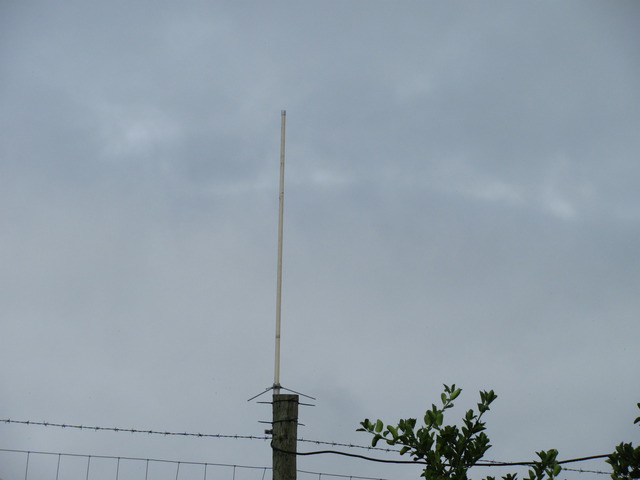

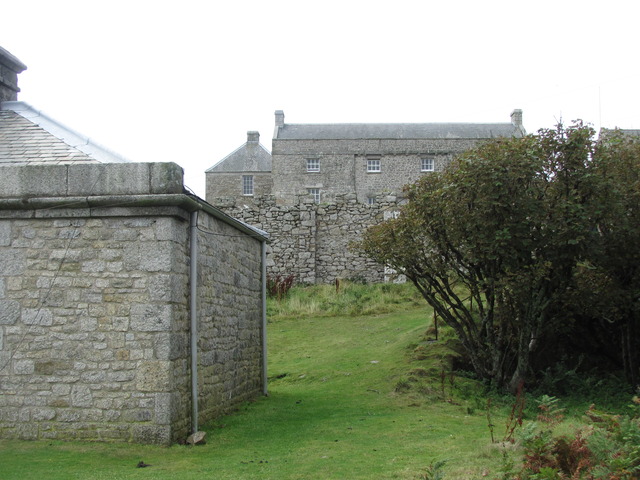

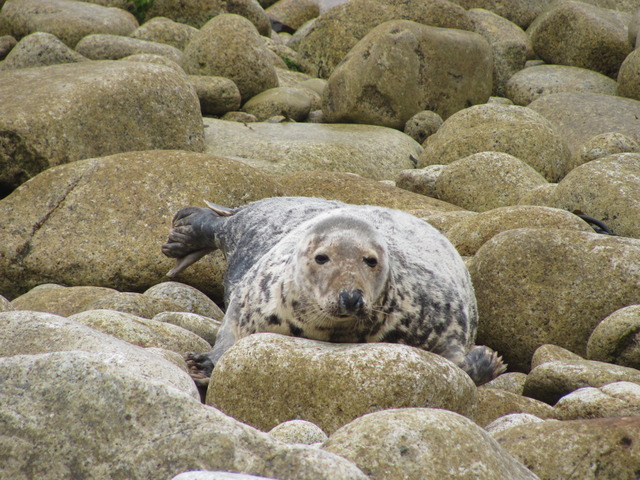
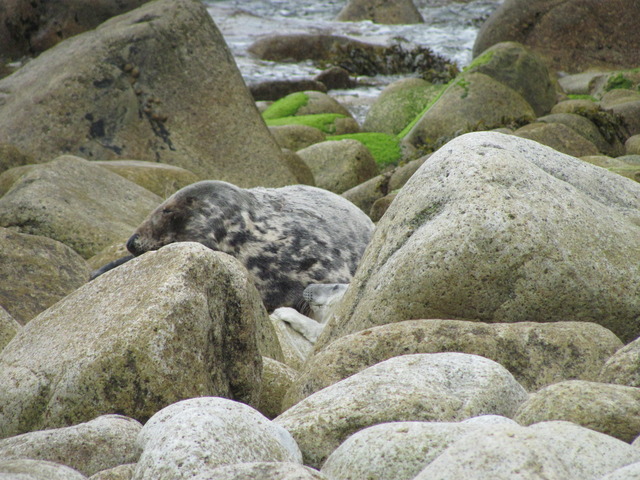

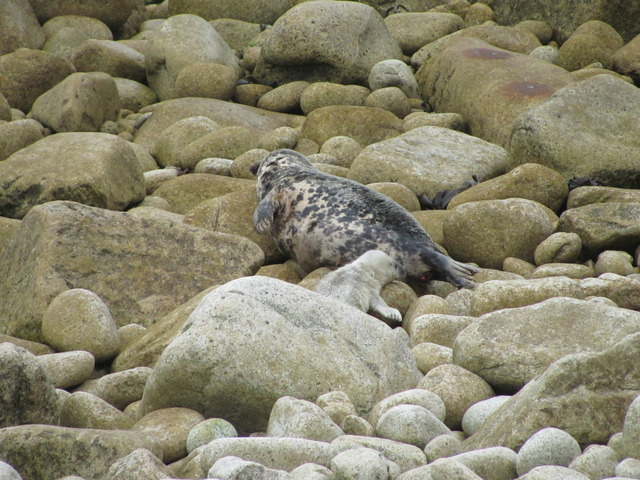

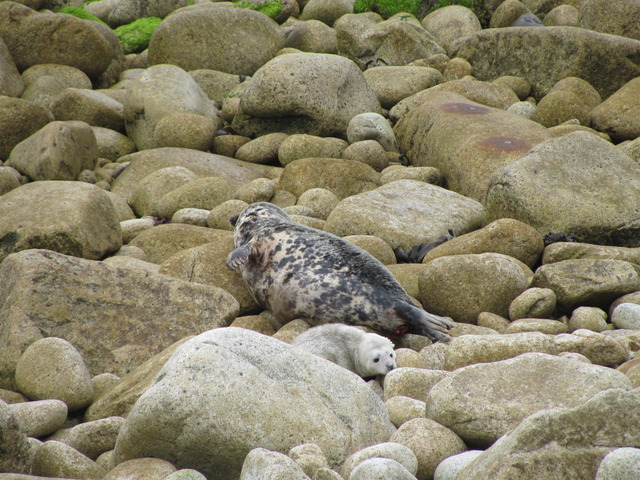
There were no major antenna issues to deal with today. We put the 2m colinear up on one of the fence posts and were rewarded by a SWR of 1.3:1 out in the open. The addition of a 20W 2m rig allowed us to access our local repeaters GB3BC and GB3WR. It also provided great VHF coverage over the entire island allowing us to use hand helds to talk back to Government House.
With no more substantive changes to any of the stations Andy and Matt took a walk down to Quarry Beach but retreated quickly when they discovered that a seal cow had a pup on the beach.
Thursday 8 September 2011
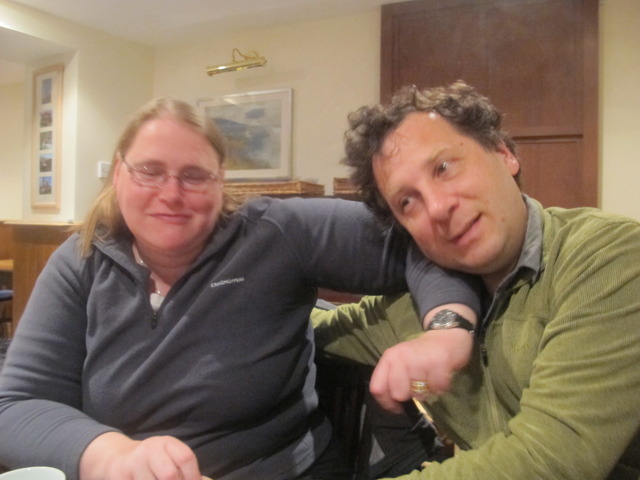

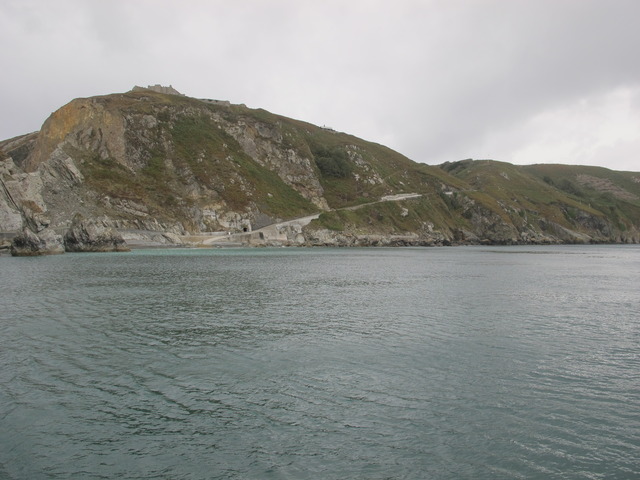

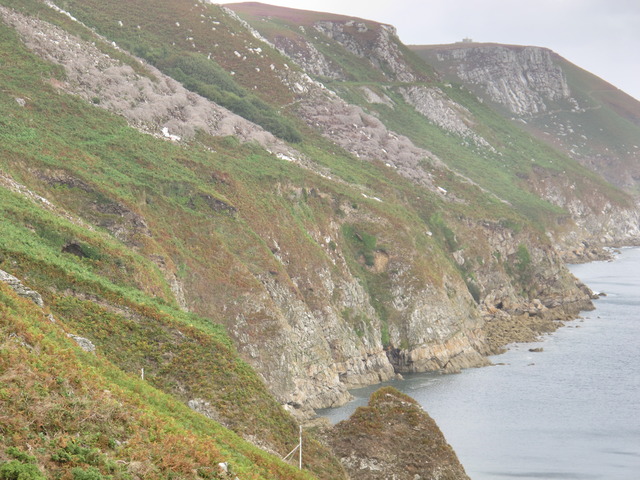
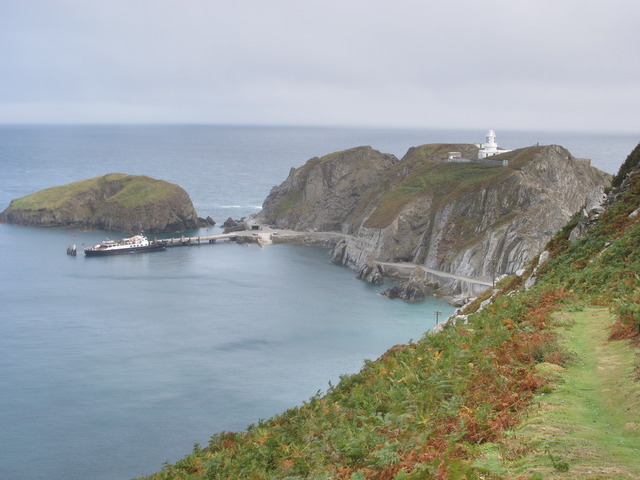

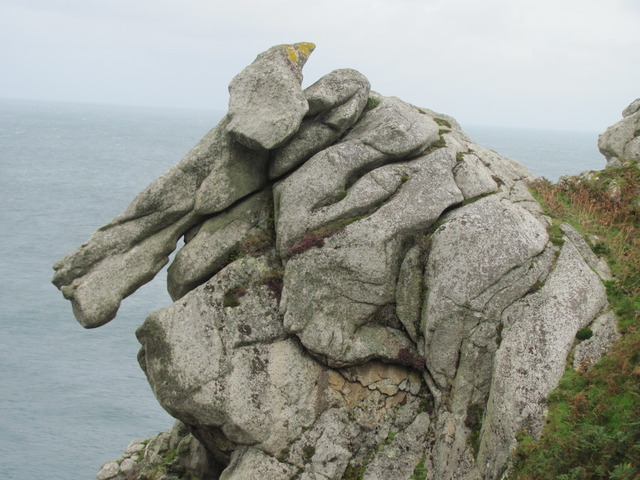

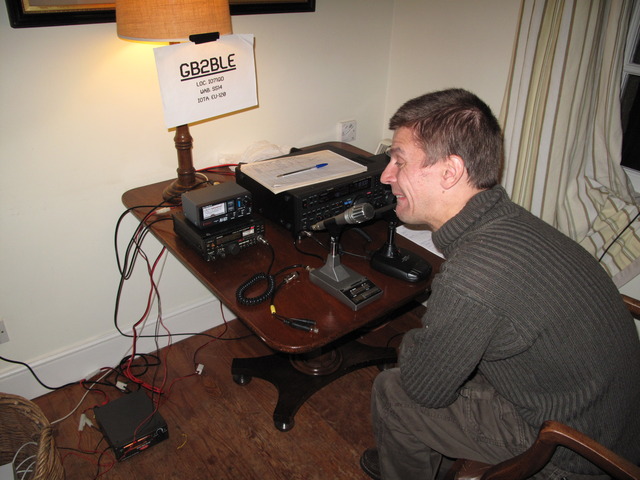
All the antennas survived the night. Even the G5RV didn't need to have its centre pole put up. So it's business as usual. There was an initial fright as Andy fired up the 2m and main HF stations. On HF the 40m band seemed to be very quiet which was something of a surprise given that we have been struggling with S9 noise. Even more of a surprise is that the 2m SWR had gone from a comfortable 1.3:1 yesterday to 3:1 today. A quick examination of the antenna and the feeder showed nothing untoward, everything appeared to be ship shape and Bristol fashion. The problem was quickly solved when Peter pointed out that the antennas had been disconnected overnight, oops…
We made a bit of a discovery on the data station today, probably this is well known to data aficionados. In truth it is probably a very obvious effect that we, as a group of experienced amateur radio operators, should have expected but it just didn't occur to us. Over the week we have had occasions when the output power and the ALC levels suddenly change from one QSO to the next. We had double checked cables and so forth and ultimately put these variations down to the temporary nature of the G5RV antenna and the rather savage wind. Today, however, the problem became not only clearer but also very repeatable.
FLDigi, which is our chosen digi modes program thanks to its cross platform support, shows a waterfall which is more or less the filter width. On our setup using the FT-857 with stock filters this is about 3kHz wide. If you select a signal on the extremities of the waterfall then the filter kicks in and limits the transmitted power. If you get close enough to the edge of the waterfall then zero power is transmitted. To overcome or avoid this it is desirable to centre the operating (not carrier) frequency in the waterfall, however as yet we have found no quick way of doing this in FLDigi despite having CAT control of the FT-857. Our attempts at using the pause button have no effect what so ever and the QSY button does not work as advertised at the moment in that it moves the cursor to the centre of the sweet spot defined in the configuration however it does not move the signal beneath the cursor and it also seems to work in reverse compared to the logic of the situation. We can effectively work PSK, and knowing the desire to centre the signal we can achieve this manually, but more experimentation at home with a decent internet connection is definitely desirable at this stage.
Being Thursday we had a sked to contact the club at 20:00 on 40m. We had to start calling about 15 minutes early to keep the frequency.
We worked the club on 40m but it was a battle with the noise. Ultimately their signal fell into the noise and became more or less unreadable so we switched to GB3BC and continued chatting and having the crack with the club for about an hour, including bringing in some of the members who hadn't been able to get to the club tonight. All good fun…
Friday 9 September 2011
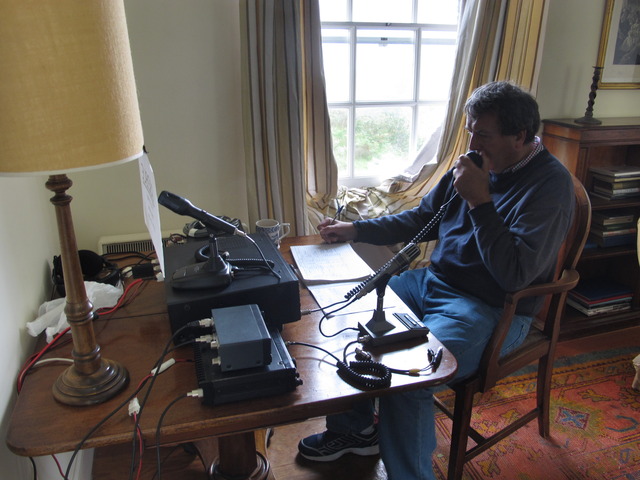

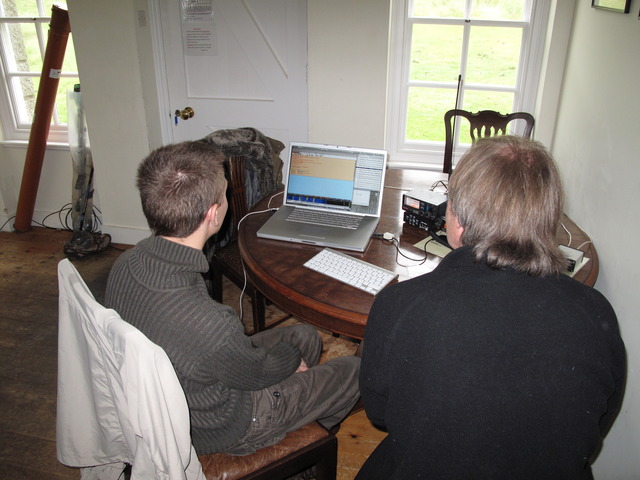

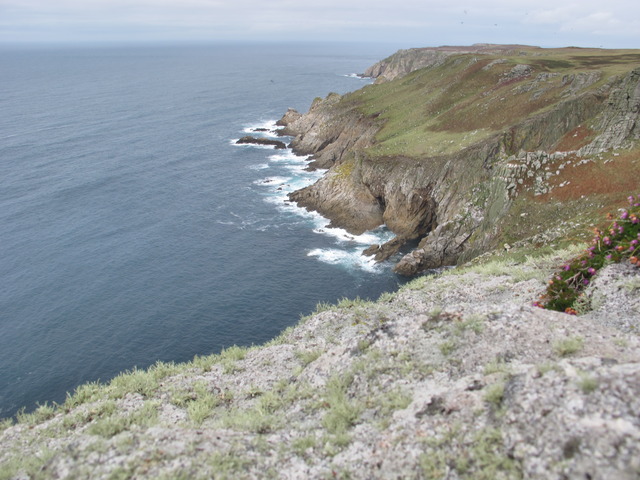
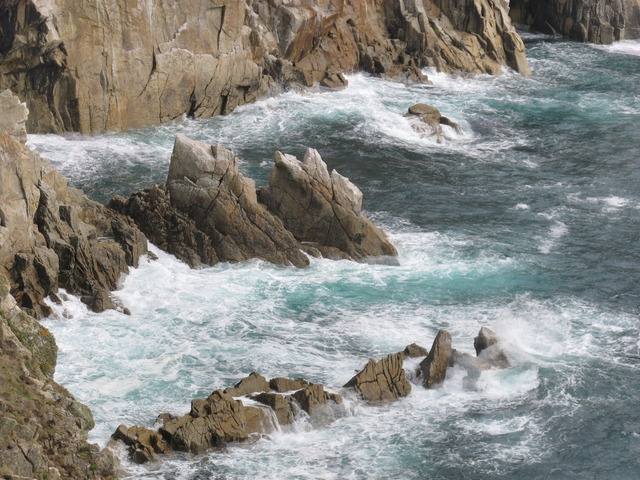

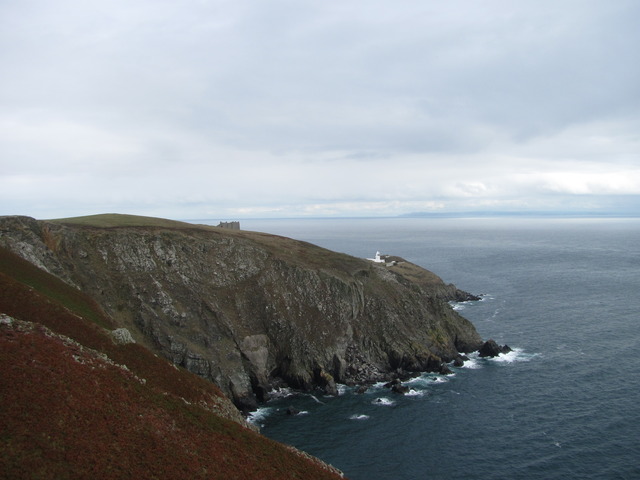

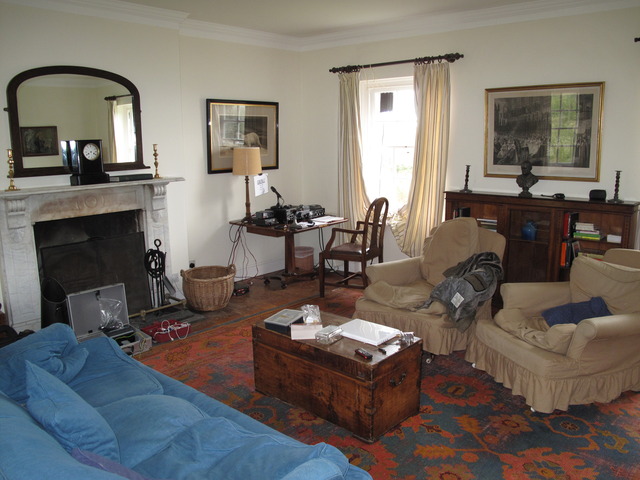
The day has started foggy again, although better weather is expected. The wind has dropped but the visibility is probably limited to no more than 150m. Yesterdays fog was apparently restricted to the immediate waters around the island. Once further afield the Oldenburg was sailing through clear waters.
We've got perhaps half a day of operating left, as we will have to take the kit down and pack away this afternoon/evening to be ready for tomorrows departure. We have to vacate the property by 09:30 despite not leaving the island until 16:00.
40m seems to be back to more normal conditions, we have a much lower noise floor and the fading is less pronounced than it has been during the week and typically we are working a pile up. Have to see how long this lasts before making a decision about lunch and take down times. It is important that the antennas are taken down in day light but all of the other kit could be packed away during the evening.
Would you credit it? It's the last few hours of operation and the noise floor has dropped we're working pile ups, the wind has dropped, the rain has stopped, the fog has lifted, the sun is out and the sea is calm. Isn't that just typical!
There's a notice in the Marisco Tavern, which is probably our second home, saying that there is the possibility of adverse weather on our day of departure. We have to be in the Tavern at 09:30 tomorrow (Saturday) for an update. Talking to some of the longer serving staff, who know the longer serving members of our team, the expected course of action is that the Oldenburgs sailing time will be brought forward from 16:00 to perhaps 12:00 or 13:00 but that we are unlikely to have to resort to the helicopter, and hence the surcharge. In truth these possible new arrangements will be preferable to the actual timetable, since a 13:00 sailing will get into Ilfracombe around 15:00 – 15:30 meaning we can get back to Bristol for 18:00 – 18:30 rather than the more likely 21:00
Being at something of a loose end without our radio equipment we decided to play with data modes without the benefit of a transceiver. By setting up two MacBooks next to each other and cranking up both the audio volume and the mic pre-amp, we were able to have data QSOs in a variety of weird and wonderful modes across the table. Perhaps not the best QSOs we ever had and certainly not going to win any DX awards the exercise, quite apart from being a bit of mad fun, actually allowed us to hear some of the data modes for the first time so that we would possibly recognise them if we come across them on the bands.
It also afforded us the opportunity to compare the error correction capabilities and throughput compared to the bandwidth required to send the signal. All in all a bit of informative and harmless fun that only got annoying after an hour or so!
Saturday 10 September 2011
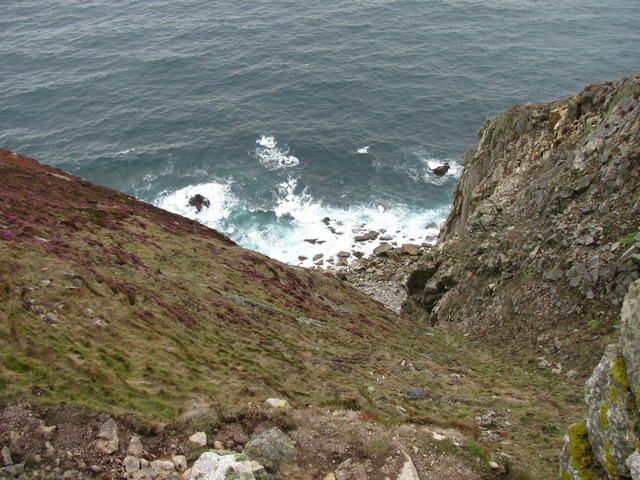

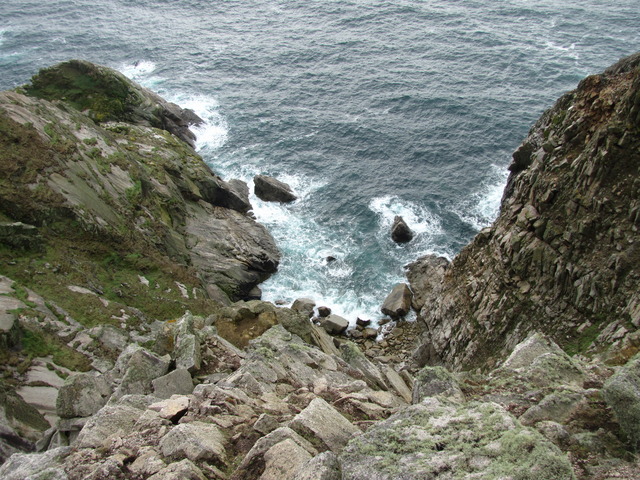

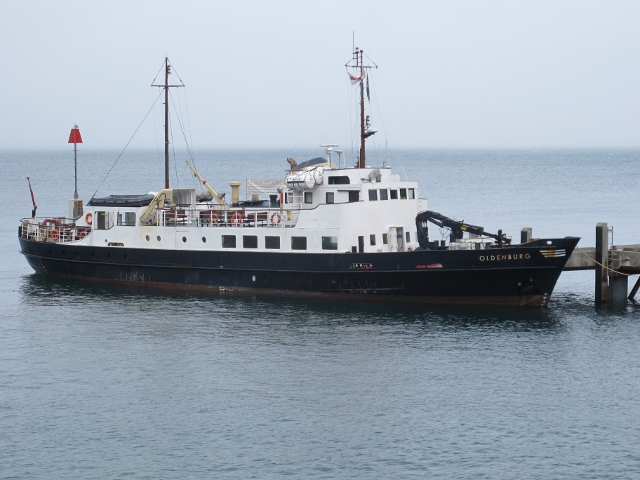
We will be sailing not flying, although as predicted the day trippers have been cancelled and the Oldenburg is going to sail at 13:00.
So that's more or less it. All over. The gear is packed and stowed and we are kicking our heels now until it's time to go to the jetty and board. This return crossing probably wasn't as bad as the outbound one and with the benefit of a following wind, which was pushing a weather front towards us, we were back in Ilfracombe in 1.5 hours followed by the mini bus trip home
